Distance to Earth 4,892 light years Radial velocity (Rv) 41 km/s | Surface gravity (log g) -0.6 cgs Parallax (π) 0.83 ± 0.1 mas | |
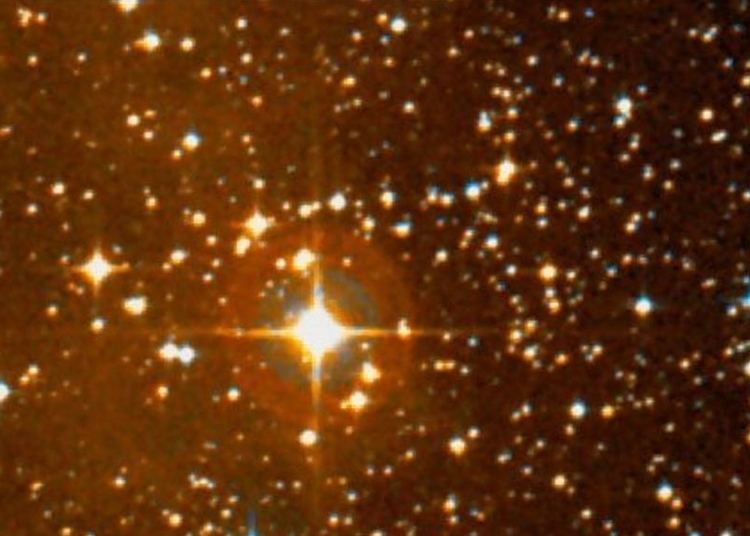 | ||
Radius 988.3 million km (1,420 R☉) Proper motion (μ) RA: 9.84 mas/yr; Dec.: 0.75 mas/yr Similar | ||
Zooming in on the red hypergiant star vy canis majoris
VY Canis Majoris (VY CMa) is a red hypergiant star located in the constellation Canis Major. It is one of the largest stars (at one time it was the largest known) and also one of the most luminous of its type. It has a radius of approximately 1,420 solar radii (990,000,000 km; 6.6 au), and is 17 ± 8 times as massive as the Sun. Located about 1.2 kiloparsecs (3,900 light-years) from Earth, it is too faint to be seen with the naked eye.
Contents
- Zooming in on the red hypergiant star vy canis majoris
- The future of vy canis majoris astronomy info
- Observational history
- Spectrum
- Properties
- Luminosity
- Size
- Distance
- Surroundings
- Controversy
- References
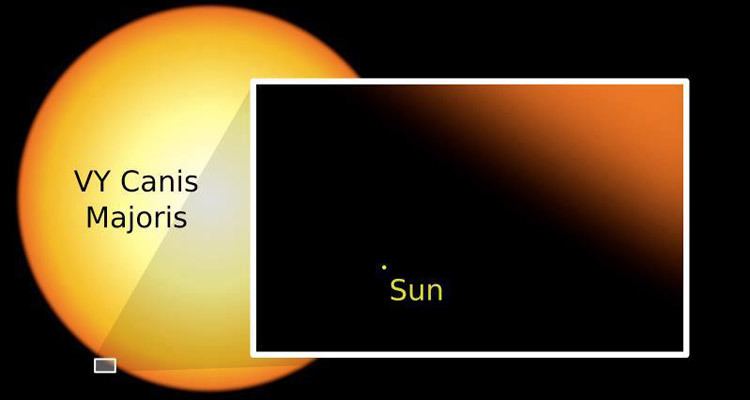
VY Canis Majoris is a single star categorized as a semiregular variable with an estimated period of 2,000 days. It has an average density of 5 to 10 mg/m3. If placed at the center of the Solar System, VY Canis Majoris's surface would extend beyond the orbit of Jupiter, although there is still considerable variation in estimates of the radius.
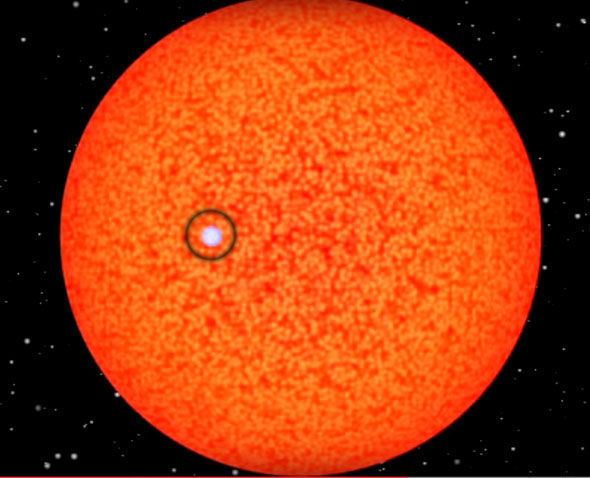
The future of vy canis majoris astronomy info
Observational history
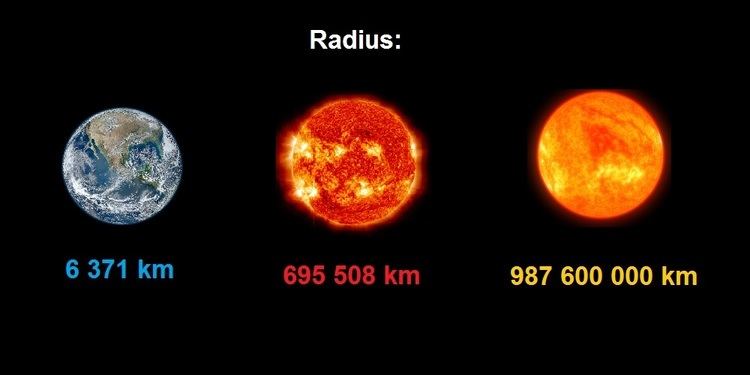
The first known recorded observation of VY Canis Majoris is in the star catalogue of Jérôme Lalande, on 7 March 1801, which lists it as a 7th magnitude star. Further 19th-century studies of its apparent magnitude demonstrate that the star has been fading since 1850. Since 1847, VY Canis Majoris has been described as a crimson star. During the 19th century, observers measured at least six discrete components, suggesting that it might be a multiple star. These discrete components are now known to be bright areas in the surrounding nebula. Visual observations in 1957 and high-resolution imaging in 1998 showed that there are no companion stars.
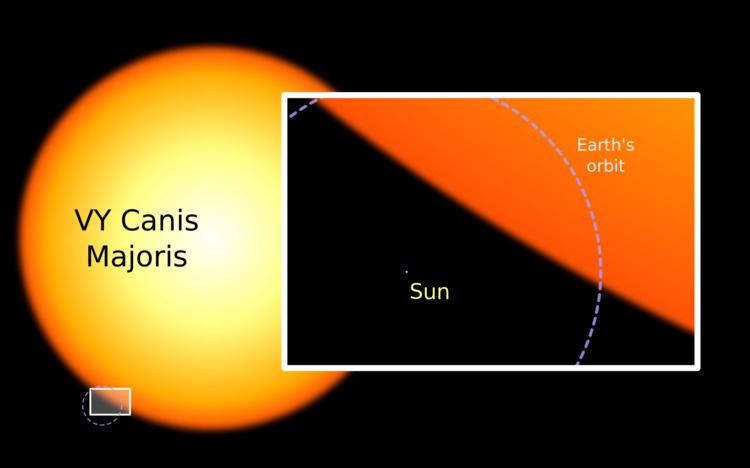
The varying brightness of VY Cma was not described until 1931 when it was listed (in German) as a long period variable with a photographic magnitude range of 9.5 - 11.5. It was given the variable star designation VY CMa in 1939.
Spectrum
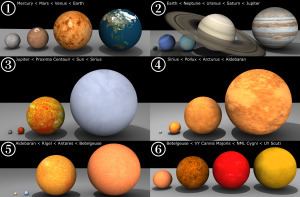
The spectrum of VY CMa is that of a luminous class M star. The hydrogen lines have P Cygni profiles. The spectrum is dominated by TiO bands whose strength suggests a classification of M5. The Hα line is not seen and there are unusual emission lines of neutral sodium and calcium. The luminosity class as determined from different spectral features varies from bright giant (II) to bright supergiant (Ia), with a compromise being given as M5eIbp. Early attempts at classification were confused by the interpretation of surrounding nebulosity as companion stars.
The derived spectral class varies depending on the features examined. The spectral features also vary over time. It is considered to be unambiguously cooler than M2 and is usually classified between M3 and M4. Classes as extreme as M2.5 and M5 have been given. The luminosity class is likewise confused and often given only as I.
Properties
VY Canis Majoris is a high-luminosity M star with an effective temperature of about 3,500 K, placing it at the upper-right hand corner of the Hertzsprung–Russell diagram and meaning it is a highly evolved star. During its main sequence, it would have been an O-type star with a mass of 15 to 35 M☉.
Luminosity
In 2006, University of Minnesota Professor Roberta M. Humphreys used the spectral energy distribution distance of VY Canis Majoris to calculate its luminosity. Since most of the radiation coming from the star is reprocessed by the dust in the surrounding cloud, she integrated the total fluxes over the entire nebula and showed that VY Canis Majoris has a luminosity of 5.6×105 L☉.
More recent estimates of the luminosity using a variety of methods give lower values of around 3×105 L☉.
Size
Humphreys originally estimated the radius of VY CMa at 1,800-2,100 solar radii, which made it the largest star then known. A more recent and accurate VLTI measurement gives the star a radius of 1,420 ± 120 solar radii.
Distance
In 1976, Charles J. Lada and Mark J. Reid published the discovery of a bright-rimmed molecular cloud 15 minutes of arc east of VY Canis Majoris. At the edge of the cloud bordered by the bright rim, an abrupt decrease in the CO emission and an increase in brightness of the 12
CO emission were observed, indicating possible destruction of molecular material and enhanced heating at the cloud-rim interface, respectively. Lada and Reid assumed the distance of the molecular cloud is approximately equal to that of the stars, which are members of the open cluster NGC 2362, that ionize the rim. NGC 2362 has a distance of 1.5 ± 0.5 kiloparsecs as determined from its color-magnitude diagram. VY CMa is projected onto the tip of the cloud rim, suggesting its association with the molecular cloud. In addition to that, the velocity of the molecular cloud is very close to the velocity of the star. This further indicates the association of the star with the molecular cloud, and consequently with NGC 2362, which means VY Canis Majoris is at the same distance. A more recent measurement of the distance to NGC 2362 gives 1.2 kiloparsecs.
Stellar distances can be calculated by measuring parallaxes as Earth orbits around the Sun. However, VY Canis Majoris has a tiny parallax due to its great distance, and standard visual observations such as by Hipparcos have too great a margin of error to be useful. VLBI measurements of the parallax of VY Canis Majoris using H2O masers are much more accurate and give a distance of 1.14+0.11
−0.09 kiloparsecs (kpc). VLBI measurements using SiO masers give a distance of 1.20+0.13
−0.10 kpc. The Gaia mission should provide visual parallaxes with even better accuracy.
Surroundings
VY Canis Majoris is surrounded by an extensive nebula, which contains condensations that were once regarded as companion stars. The nebula has been extensively studied with the aid of the Hubble Space Telescope. It has a complex structure that includes filaments and arcs, which were caused by past eruptions; this structure is similar to that of the nebula surrounding the yellow hypergiant IRC+10420. The similarity has led astronomers to propose that VY CMa will itself become a yellow hypergiant, then a luminous blue variable, and finally a Wolf–Rayet star, if it does not explode as a supernova first. Multiple asymmetric mass loss events are deduced to have occurred within the last 1,000 years. The mass loss is due to strong convection in the tenuous outer layers of the star, associated with magnetic fields. This is similar to the sunspots and coronal ejections of the Sun but on a much larger scale.
Controversy
There have been conflicting opinions of the properties of VY CMa. In one view, the star is a very large and very luminous red hypergiant. The various larger estimates of the size and luminosity fall outside the bounds of current stellar theory, both beyond the maximum predicted size of any star and far cooler than a star of its luminosity can become. In another opinion (such as Massey, Levesque, and Plez's study), the star is a normal red supergiant, with a radius around 600 solar radii and falling comfortably inside models of stellar structure and evolution. More recent papers produce intermediate values for radius and luminosity, falling at the very extreme for the expected size and luminosity of red supergiants (or hypergiant based on its emission spectrum and high mass loss rate).
VY Canis Majoris also illustrates the problem of defining the "surface" (and so the radius) of very large stars. With an average density of 0.000005 to 0.000010 kg/m3, the star is a hundred thousand times less dense than the atmosphere of Earth at sea level. It is also undergoing strong mass loss with the outer layers of the star no longer gravitationally bound. The definition of the boundary of such stars is based on the Rosseland Radius, the location at which the optical depth is one (or sometimes a different value such as 2/3). In cases such as VY CMa, the radius may be defined on a different opacity value or on an opacity at a particular wavelength.
